Key takeaways:
- Aquafaba and mashed bananas serve as effective substitutes in vegan baking, enhancing texture and flavor.
- Accurate measurement of ingredients is crucial for successful vegan baking; precision leads to better consistency in results.
- Exploring plant-based alternatives like nut butters and dairy-free milk can elevate traditional recipes and add unique flavors.
- Creating a vegan brunch involves balancing flavors and showcasing familiar dishes to appeal to a broader audience.
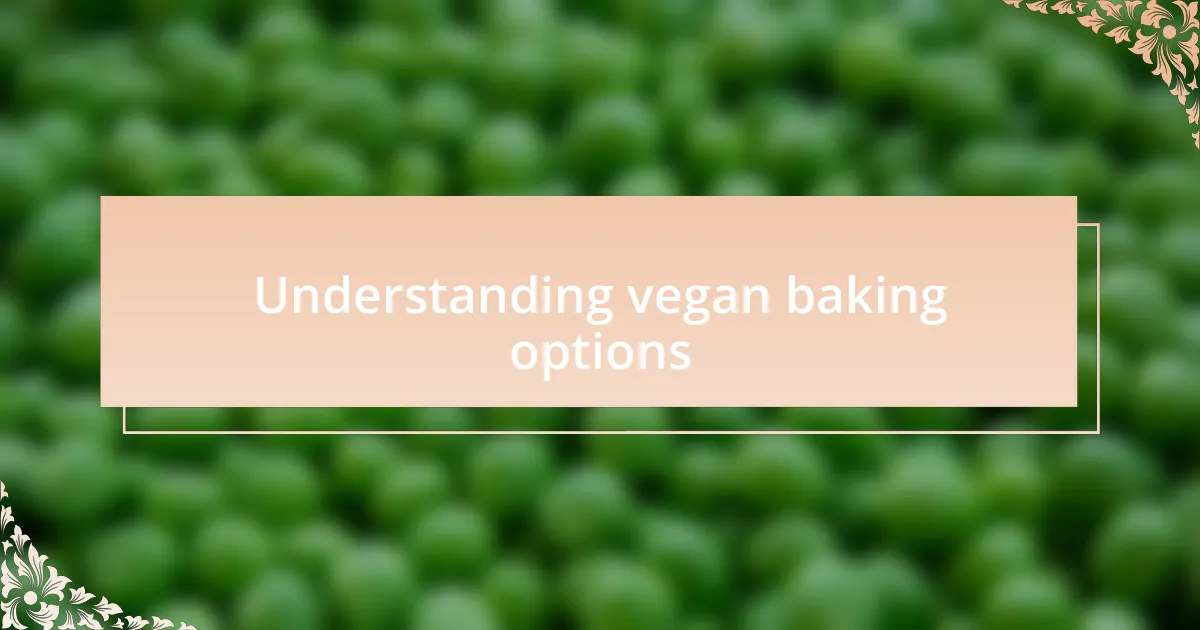
Understanding vegan baking options
When I first stumbled into vegan baking, I was surprised by the vast array of ingredients available to replace traditional staples. For instance, aquafaba, the liquid from canned chickpeas, became a revelation for me. It whipped up into a beautiful meringue, leaving me wondering how I ever baked without it!
Exploring plant-based alternatives also led me to discover the versatility of fruits in baking. I fondly remember using mashed bananas to replace eggs in a recipe, only to find that my muffins were not only moist but carried a subtle, delicious sweetness. Have you ever tasted a banana muffin that felt like a warm hug? I certainly have, and it instantly made me appreciate the creativity vegan baking offers.
Then there’s the challenge of finding the right fats. I used to think that butter was irreplaceable, but I found that coconut oil or even avocado worked wonders in my recipes. Each substitution invited me to rethink my approach and discover new depths of flavor. Have you considered how much possibility lies in your pantry? It’s fascinating how vegan baking can be both a challenge and a delightful adventure in the kitchen!
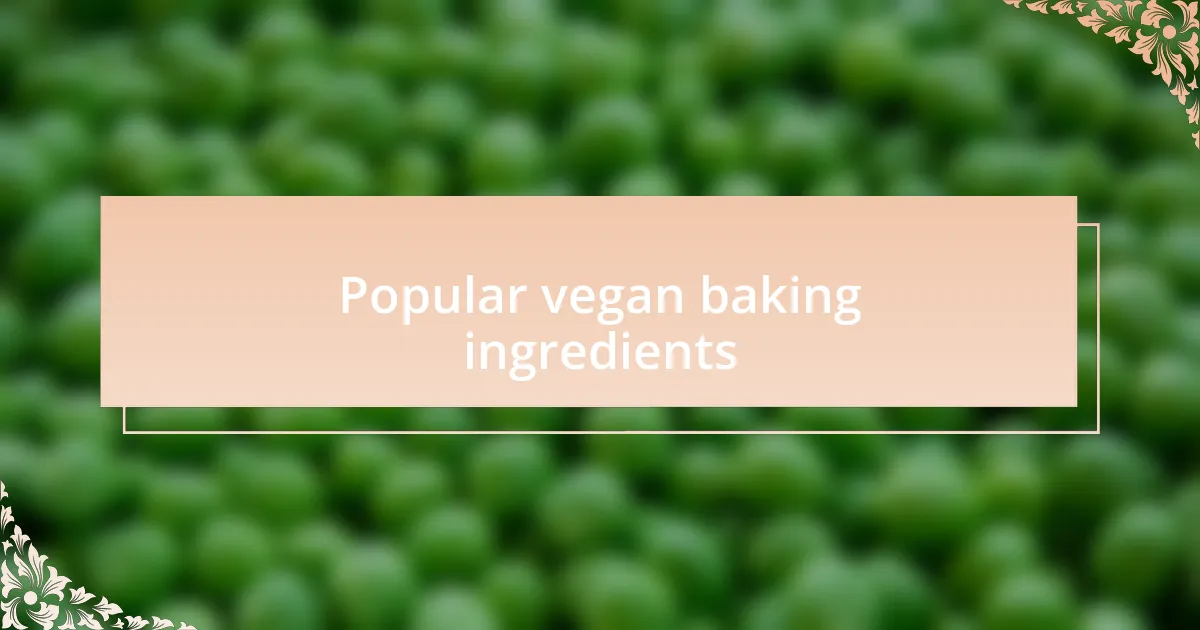
Popular vegan baking ingredients
When it comes to sweeteners, my journey led me to explore maple syrup and agave nectar. Initially, I was hesitant to stray from sugar, but these alternatives brought a distinct flavor that transformed my baked goods. Have you ever tasted a cake infused with rich, caramel-like maple syrup? It’s a game changer!
Another essential ingredient in vegan baking is nut butters, like almond or cashew butter. I remember the first time I added peanut butter to a brownie recipe; the result was nothing short of magical. The rich, nutty flavor added a depth that I didn’t know was missing before. It made me wonder—what other everyday ingredients could elevate our favorite treats?
Don’t overlook dairy-free milk alternatives, such as almond, oat, or soy milk. When I swapped traditional milk for oat milk in my pancakes, I was delighted by how fluffy they turned out. It’s amazing how simple changes can yield such delightful results, isn’t it? Each ingredient opens up new possibilities, encouraging us to think outside the box and experiment with flavors we might never have considered.
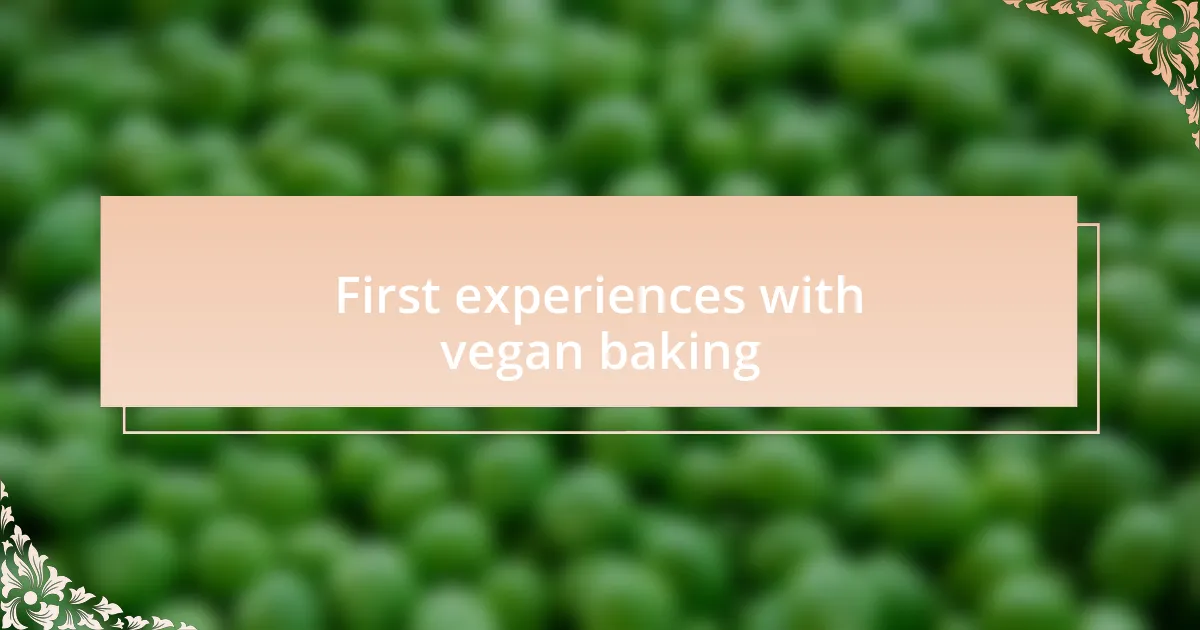
First experiences with vegan baking
My first attempt at vegan baking was a delightful disaster. I remember eagerly swapping eggs for flaxseed meal, convinced it would mimic their binding magic. The result was a batch of cookies that crumbled instead of held together, but the taste was surprisingly sweet, hinting at the potential of this new baking world.
I was particularly nervous about replacing butter, an ingredient I had relied on for years. After reluctantly trying coconut oil, I was amazed at how it imparted a delicate flavor and a tender crumb to my cakes. Have you ever had a dessert that made you rethink everything you thought you knew about baking? That was my moment, and it sparked a curiosity that kept me experimenting in the kitchen.
As I continued my journey, I stumbled upon aquafaba—yes, the liquid from canned chickpeas! The first time I whipped it to create a meringue, I was in disbelief. Witnessing that transformation made me feel like a magician. It led me to wonder, what other surprising ingredients could create such culinary wonders? Those early experiences ignited a passion that turned vegan baking from a challenge into my newfound love.
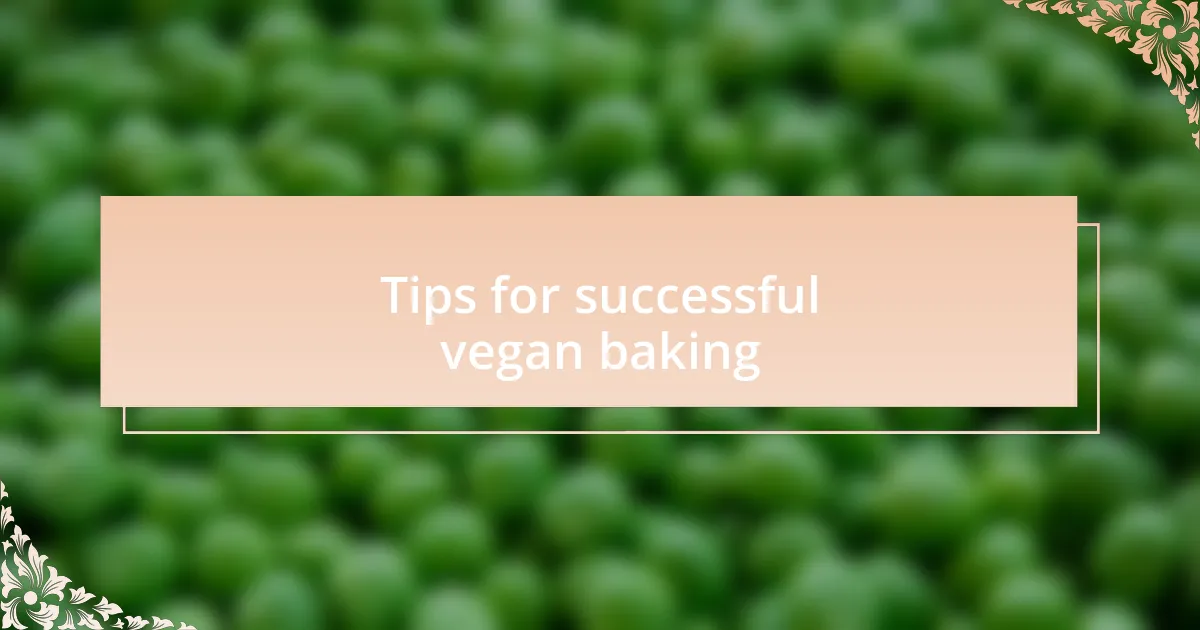
Tips for successful vegan baking
When it comes to vegan baking, one golden rule stands tall: always measure your ingredients accurately. I learned this the hard way during a rather adventurous attempt at vegan pancakes. I thought I could eyeball the flour, but the resulting batter was a chaotic mix that led to dense and less-than-fluffy pancakes. Precision not only helps with consistency but also ensures that the final product is a delight rather than a disappointment.
Incorporating natural sugars can elevate your vegan treats beautifully. I often turn to ripe bananas or dates as sweeteners, which not only add flavor but also provide moisture. The first time I substituted refined sugar with mashed bananas in a muffin recipe, the delightful aroma filled my kitchen, and the end result was a moist, flavorful treat that had everyone asking for seconds. Have you ever experienced the joy of baking something everyone loves, only to find out it’s vegan? It’s a special moment that keeps me coming back for more.
Experimenting with different plant-based milk options is essential in this journey, too. I vividly remember trying almond milk in my cake batter for the first time. The subtle nutty flavor complemented my recipe in ways I never anticipated. It made me realize that finding the right ingredient can unlock a whole new level of taste. Have you ever thought about how a simple swap can reinvent a classic dish? It’s these little discoveries that inspire creativity and keep my baking adventure exciting.
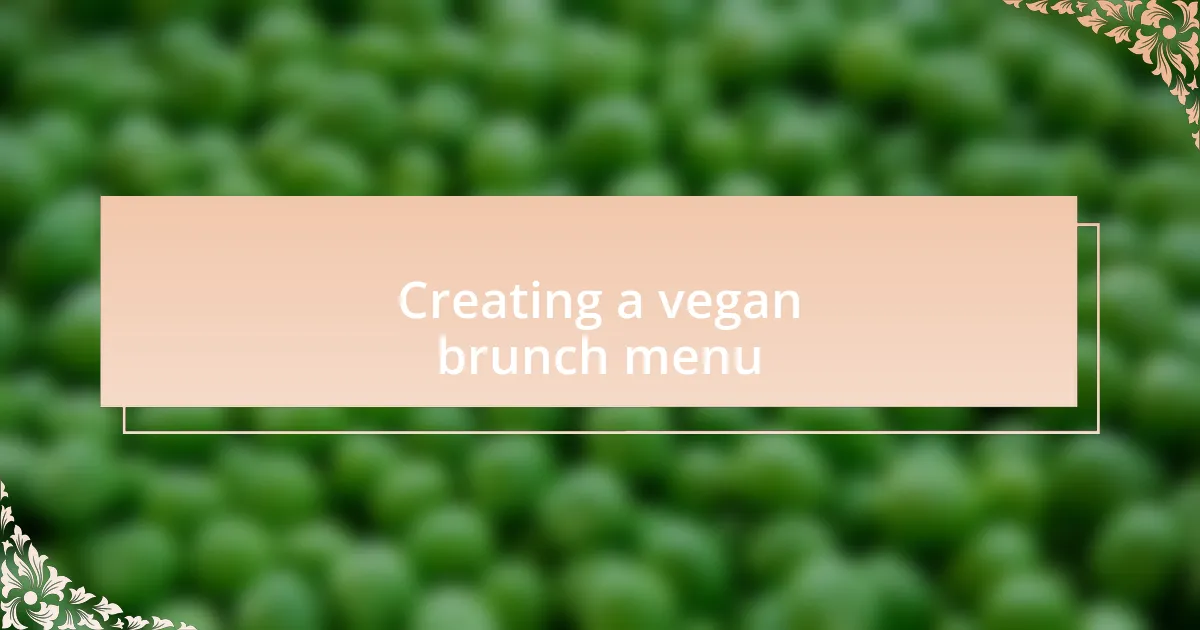
Creating a vegan brunch menu
Creating a vegan brunch menu is all about embracing flavors that surprise and delight. I remember the first time I decided to host a vegan brunch. I wanted to showcase the variety and richness that plant-based cooking offers. One standout dish was a savory chickpea flour pancake filled with fresh vegetables and spices, which was a hit among my guests. It made me realize how satisfying a vegan dish can be when made with passion and creativity.
In choosing dishes, I always think about balance. For instance, pairing a sweet fruit salad with a zesty avocado toast brings out the best of both worlds. This contrast not only pleases the palate but also adds visual appeal to the table. Have you ever noticed how a colorful plate can brighten your mood? That’s why vibrant ingredients are a must on any brunch menu.
Finally, I’ve learned to keep my audience in mind. Some might be unfamiliar with vegan options, so I strive to create dishes that showcase familiar flavors. One memorable creation was a vegan version of a classic quiche using tofu and nutritional yeast for that cheesy flavor without any animal products. Seeing the surprise on my friends’ faces when they learned it was completely plant-based was incredibly rewarding. It’s these moments that motivate me to keep pushing the boundaries of vegan brunch offerings.